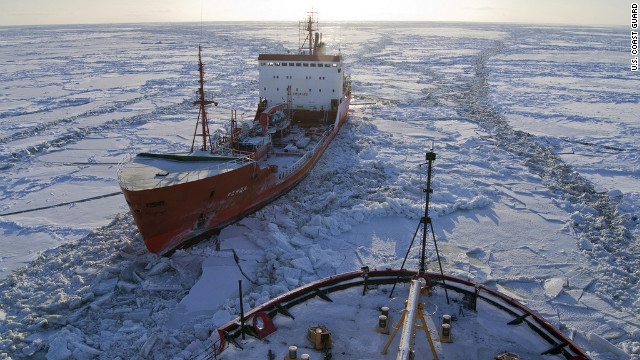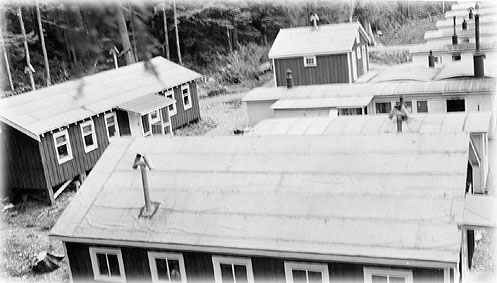Essential Question: What are issues facing Alaskans today related to transportation and communication?
When I first moved to Alaska, I was dumbfounded at the high prices of groceries. It amazed me at the differences in cost for items I normally would purchase when I lived in Washington compared to here in Anchorage. And I didn’t get it at first – were prices higher here because everyone got the “oil money”? Then I realized that the majority of what I was buying (fresh fruits and vegetables, dairy) was coming from out of state; in Alaska, out of state means far away.
According to the
Explore Alaska! blog, over 80% of all cargo arrives in state via marine transport. This makes sense, since ships were the first major mode of transport to Alaska. Over the last 30 years, shipping has been the major link between moving items from the lower 48 to Alaska. This is crucial, since Alaskans depend on shipping for the delivery of food, building materials, and petroleum products. According to the
Alaska History and Cultural Studies website, the cost of living in Alaska would be much higher without the highly developed systems of ocean and river transportation now in place.
I think another issue that Alaskans face today in respect to transportation is the cost of transportation itself. Because of the limited number of major roads in the state, traveling to and from towns that are not located along the highway can be costly. Leaving the state is another story entirely. While over 30 air carriers operate out of Ted Stevens Airport (
Explore Alaska!), the average cost of a domestic flight from Anchorage to Seattle is $545 (
Bing). Both driving and taking the ferry are other options, but those both take time. I’ve personally driven from Washington state to Anchorage, and without stopping except to get food, fuel, and sleep for a few hours, it still took 3 days. While Alaska is an awesome place, the amount of time and cost it takes to travel can be a challenge.
 |
The Russian tanker Renda
CNN |
The weather can also have an impact on both transportation and communication in Alaska. While residents have adapted to and learned to love the environment around them, the unpredictable nature of our weather can create interruptions. Even building roads and railroads can be challenging with the changing weather conditions (
Explore Alaska!). In December 2011, a Russian tanker had been tasked with taking fuel to Nome, which hadn’t had any delivered since November due to a massive storm. The tanker experienced a slow journey, however, and had to have an icebreaking ship carve a route in the ocean for it to travel. It wasn’t until January 16, 2012, that the tanker was able to get near enough to Nome to transfer the fuel via hose (
USA Today).
Examine Question: What were the factors that prompted the growth of ocean and river transportation in Alaska?
The need for more transportation routes and vehicles escalated in the late 1800’s. When the Klondike Gold Rush set off in 1897, thousands of people flooded to Alaska in search of the ultimate discovery. Before the gold rush, only a limited number of companies provided passage from Seattle, Portland, or San Francisco to Alaska, and only offered them a limited number of times. According to the
Alaska History and Cultural Studies site, when “68 miners from the Canadian Klondike reached Seattle…they brought with them $964,000 in gold dust and nuggets. People immediately swarmed north by ship.” With that news, companies sent over 170 ships to Alaska, carrying freight and passengers.
Once they reached Alaska, those in search of gold still had to travel via rivers to get near the action. Before the gold rush, two steamboats operated on the upper part of the Yukon River. Once the news got out about the gold, the number of steamboats soared. In order to transport the passengers and freight upriver, the 30+ steamboat companies competing for service had to build 60 new boats to send on the Yukon. However, once the gold rush panned out (pardon the pun), so did the need for steamboats. According to the
Alaska History and Cultural Studies site, “The gold rush era steamboats accounted for most of the nearly 300 steamboats known to have been used on the Yukon River.”
 |
The Inside Passage
National Geographic Expeditions |
The vast coastal region of Alaska remained a mystery to many travelers until the early 1900’s. During the Klondike Gold Rush, over 300 ships wrecked on their way through the Inside Passage due to poor charting and submerged hazards. Two lighthouses were erected in 1901 on Sentinel Island and Five Fingers Island in Southeast Alaska (
Lighthouse Friends). It wasn't until 1914 that surveying of the coastal areas began. Even with these advancements, according to the
Alaska History and Cultural Studies site, “losses averaged about 24 ships a year until World War II.”
Extend Question: How dependent is your community on air transportation?
I think that any community in Alaska is fairly dependent on air transportation, regardless of size or location. Obviously location would change the degree of dependence, but since the majority of our goods are coming from out of state, air transportation is much needed. Villages in the bush rely on passenger, mail, and cargo air traffic (
Explore Alaska!).
I live right outside of Anchorage, and I personally find myself depending air transportation for a number of reasons. One, I know that I can rely on air transportation to bring goods to the stores in my area year-round, especially in the winter when there is less marine transport. Two, I can also count on receiving goods via mail from out of state. Maybe it’s because I’m fairly new to Alaska, but I still find myself wanting to purchase those old standby items that I was easily able to buy when I lived in the lower 48. Third, I definitely depend on air transportation to help me travel to and from the state. My family is from Washington state, and I like to visit them when I can. Other than summer, though, I usually only have a few days at most for a trip. Flying is a saving grace because it cuts down on time. As opposed to when I lived in the lower 48, and could drive to several different states from my home, flying is the one verifiable option for me to use while traveling.
Evaluation
I really enjoyed reading about the growth of transportation in Alaska. I sometimes fail to realize how much of the state's development stems from military intervention, and I'm starting to appreciate the role that the military has played not only in the development but the continuing advancement of Alaska's transportation.
Blog Reviews
Betty talked about how even though Alaska is rich in oil and gas deposits, there is an expensive and extensive process for these products to come back to the state for our use.
Lane described how his past experience of growing up in a suburb was totally different from living in a village of the road system. I found it interesting that even though they are 30 miles from Valdez (by sea), it is still challenging to get to.
Tina expressed her awe in the Alaska Highway, and how significant it is to connecting Alaska to the lower 48.





















